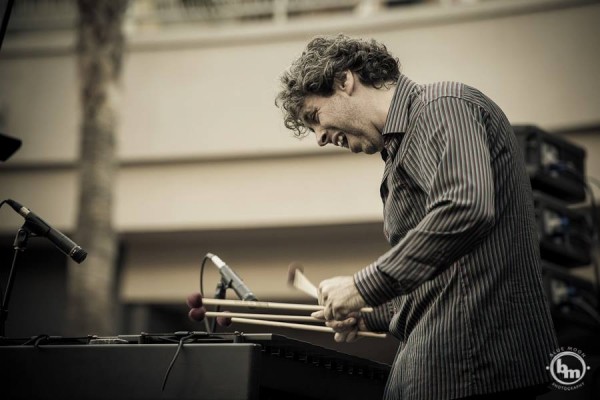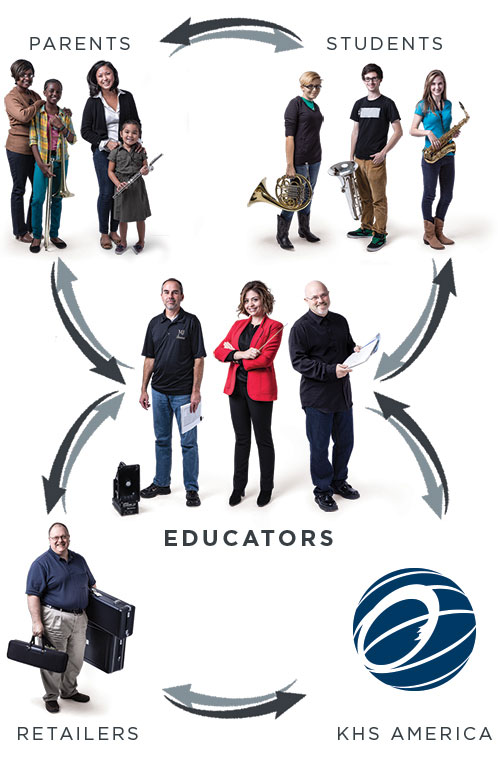There exists a popular saying; “No one has ever ‘gotten worse’ from practicing.” I suppose this is true. However, it is possible to “not get better” from practicing. This blog will address tried and true practice techniques that are sure to get you to the next level with whatever it is you’re working on.
Whether it’s improvising over a set of chord changes or playing through a Bach cello suite there will always be a spot where the continuous flow of ideas, technique or emotion is disrupted. How do you move past this place so that your ideas and technique and emotion can flow effortlessly? Follow these steps and I can guarantee you will see results.
- “The Forest for the Trees”
Before tackling any practice method it is important to gain an objective opinion about your performance. I like to record almost every time I play, be it a practice session, a rehearsal or a performance. It is very difficult to be truly objective while in the act of playing. Recording an event and listening back allows you the opportunity to listen with a more objective state of mind; a bird’s-eye-view of your performance.
- “Honesty is the Best Policy”
Once you have recorded your performance, practice session or rehearsal, listen back, and be honest with yourself about each moment of the piece. You’ll want to make physical notes about the areas that need improvement. Having a spot in a piece that is a consistent stumbling block for you can taint your impression about how you are playing the entire piece. Upon listening, you may realize that the majority of your performance is solid and that only a small portion actually needs work.
- “Did You Iron Your Shirt?”
Practicing is a lot like ironing a shirt. Imagine you’ve bought a new dress shirt. The kind that’s folded and pinned in a plastic wrapping. When you take the shirt out of the packaging, you’ll see that there are parts of the shirt that do not need ironing but the areas where the shirt was folded are heavily creased. Now imagine that shirt is like whatever piece you are working on and the creases are the areas that need improvement. You can’t just smash the iron down on the crease because the result will be new creases and old creases that are now even more compromised. Instead you need to start by smoothing out the crease with your fingers, then slowly apply the iron to the now flattened out crease until the fabric starts to loosen up and flatten out. Then you move outward from that area to the surrounding areas that are unaffected to insure that the now flattened crease blends into the surrounding fabric.
Apply this same concept to the piece of music you’re working on. Select the area that requires work and focus solely on that. You may realize that it is nothing more than a transition between two notes that is actually problematic. Work those two notes until your body is capable of making that physical transition at the prescribed tempo of the piece. Once you are confident that the material is wrinkle-free and you can flawlessly navigate that area, work on the continuity into and out of that section. Slowly and methodically add a few notes of the phrase prior to the crease and a few after until the entire area is one smooth, unified fabric.
Essentially what you are doing is erasing the wrinkles of the musical fabric. These wrinkles (mistakes) are really just bad habits formed in the initial approach to the piece. Sometimes they are actually memories of previous failures the individual experienced in completely unrelated pieces of music, or events from non-musically related life scenarios. A lot of lessons about how to change living habits can be learned from this approach. Remember this the next time you are ironing a shirt.
- “Slow and Steady Wins the Race”
Remember that bad habits exist at any tempo. When you slow things down you are more receptive to the messages that are being relayed by your mind and body. In our society we have become accustomed to instant gratification. This must be left behind when practicing. Speed and fluidity are the result of consistent care being taken at slow speeds. The human brain is much like a computer in that there are areas dedicated to short term and long term recollection of information or RAM (Random Access Memory) and SAM (Serial Access Memory). Practicing slow allows your RAM to gather as much information as possible and gives it time to accurately and effectively store it in your SAM where you can then recollect it at any time or tempo.
Don’t let the pace of everyday life cause you to skip over this most invaluable step of the process. Instead use this time to commune with your instrument and slow down your thoughts and body processes. In this way, practicing is very much a form of meditation. Have fun exposing and ironing the wrinkles in the fabric of your musical life, and realize that 20 minutes of high-quality and focused time is far more effective than an hour of repeating the same bad habits; and the feeling that comes from actual progression can create a high that you will take with you into all other aspects of your life.
Picture by: Blue Moon Photography
About the Author
Vibraphonist and composer NICK MANCINI began his professional career as a drummer, at the age of 15. His undergrad studies earned him degrees from Schenectady County Community College and The Crane School of Music at Potsdam. He moved to NYC and graduated from Manhattan School of Music with a masters degree in jazz performance; a recipient of the President’s Award scholarship. After 10 years of honing his craft in NYC, he relocated to Los Angeles. He has performed and recorded with such diverse luminaries as Arturo Sandoval, Charles Fambrough, Harvey Mason, Marvin “Smitty” Smith, Peter Erskine, Poncho Sanchez, Kenny Werner, New York Voices and Jennifer Holliday to name a few; and at notable venues such as The World Famous Apollo Theater; Showtime at the Apollo, Birdland NYC, the Aspen Music Festival, Fasching Jazz Club (Stockholm), Ford Amphitheater, Angel City Jazz Festival, Los Angeles County Museum of Art (LACMA), Catalina Jazz Club, The Blue Whale, Vibrato, Zipper Hall, Vitello’s and virtually every jazz venue in Los Angeles. In the summer of 2011, Mancini was celebrated as Honoree at the 18th annual Los Angeles Jazz Vibes Summit and was also invited to join the faculty at two California State University campuses; Northridge (CSUN) and Long Beach, Bob Cole Conservatory. Earlier that same year his face graced the cover of the popular Ventura county arts magazine, Ventana Monthly. From the fall of 2011 to the spring of 2012 Nick served on faculty of the Thelonious Monk Institute. He is on the cutting edge of the creative music scene in LA. In addition to a busy performing and recording career, Mancini also curates a semi-annual performance series called “elastic hour,” which features many of LA’s most prominent performing ensembles and garnered honorable reviews by the LA Weekly. In the realm of production, he has arranged and overseen the production of multiple Jazz vocal records and boasts seven independently released records under his own name; “storyteller” and “West Coast Cool” in 2013. Mancini holds endorsement contracts with Majestic vibes and Innovative Percussion mallets.
The content of this Blog article or Banded Story is the intellectual property of the author(s) and cannot be duplicated without the permission of KHS America and/or the author(s). Standard copyright rules apply.



 We look forward to the evolution of this exciting program, and welcome feedback on how we can further enhance the work that you do in music education.
We are excited to offer your program the opportunity to join the KHS America Academic Alliance today.
We look forward to the evolution of this exciting program, and welcome feedback on how we can further enhance the work that you do in music education.
We are excited to offer your program the opportunity to join the KHS America Academic Alliance today.